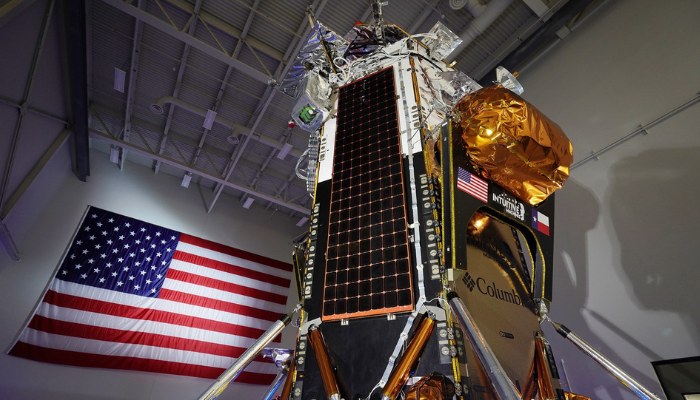Odysseus moon mission ends early after landing

Intuitive Machines, the private company responsible for the lander, announced that the mission will conclude after five days instead of the originally planned seven to ten days
Flight control engineers anticipate losing contact with the private US moon lander Odysseus on Tuesday, ending the mission five days after its sideways touchdown, according to Intuitive Machines, the company behind the spacecraft.
The extent of scientific data loss due to Odysseus’s shortened mission remains uncertain. Previous estimates from the company and its primary customer, NASA, indicated that the lander would have operated on the moon for seven to ten days.
The company’s projection for an early conclusion to the mission coincides with the emergence of new details about testing shortcuts and human error that led to an in-flight failure of the spacecraft’s laser-guided range finders before its landing last Thursday.
An Intuitive Machines representative stated that the range finder malfunction resulted from the company’s choice to skip a pre-launch test firing of the laser system to expedite pre-flight checks of Odysseus at NASA’s Kennedy Space Center in Florida.
“There were procedures we could have followed to test it and conduct an actual firing. However, these procedures would have been extremely time-consuming and costly,” said Mike Hansen, the company’s navigation systems lead, in an interview with Reuters on Saturday. “So, as a company, we acknowledged and accepted that risk.”
On Friday, Intuitive Machines revealed that the laser range finders, which were meant to provide altitude and forward-velocity readings to Odysseus’ autonomous navigation system, were not functioning because the company’s engineers had failed to unlock the lasers’ safety switch before the launch on February 15th. Similar to a firearm’s safety switch, the safety lock can only be deactivated manually.
The range finder issue, discovered just hours before the final descent, compelled flight controllers to devise an experimental workaround to prevent a potentially disastrous crash landing.
Hansen, the engineer responsible for developing the software “patch” that resolved the issue, stated that the company has not yet determined whether the improvised navigational solution, which utilized an experimental system supplied by NASA on the lander, could have contributed to the spacecraft’s sideways landing.
During its initial post-landing news briefing on Friday, the company announced that Odysseus snagged the bottom of one of its six landing legs on the uneven lunar surface during the final descent, causing it to tip over and come to rest horizontally, likely supported by a rock.
Intuitive Machines executives speculated that the spacecraft’s landing speed, approximately twice as fast as anticipated, might have contributed to the mishap. However, it remained unclear whether the use of the original laser range finders could have prevented the incident.
Regardless, Odysseus’ sideways position significantly limited the exposure of its solar panels to sunlight, crucial for recharging its batteries. Additionally, the company stated on Friday that two of its antennae were directed towards the ground, hindering communication with the lander.
Intuitive Machines executives indicated then that their engineering teams would require additional time to assess the overall impact on the mission.
In an update posted online on Monday, the Houston-based company stated, “Flight controllers plan to gather data until the lander’s solar panels are no longer illuminated. Based on the positioning of Earth and the Moon, we anticipate that flight controllers will maintain communication with Odysseus until Tuesday morning,” five days after landing.
NASA, which has several research instruments aboard the vehicle, had previously stated that these payloads were designed to operate for seven days using solar energy before the sun set over the landing site near the moon’s south pole.
Company executives had informed reporters on Friday, the day after Odysseus landed, that its payloads could function for approximately nine or ten days under the “best-case scenario.”
Intuitive Machines’ shares plummeted 35% on Monday.
Despite its less-than-ideal landing, Odysseus achieved a significant milestone by becoming the first US spacecraft to land on the moon since NASA’s last crewed Apollo mission in 1972, which brought astronauts Gene Cernan and Harrison Schmitt there.
Additionally, it was the first lunar landing by a commercially manufactured and operated space vehicle, as well as the first under NASA’s Artemis program. This program aims to return astronauts to the moon this decade, ahead of China’s planned crewed spacecraft landing.
Intuitive Machines has stated that it spent approximately $100 million on the lander and received $118 million from NASA under the agency’s Commercial Lunar Payload Services program, which aims to stimulate competitive commercial rides to the moon at a low budget.


